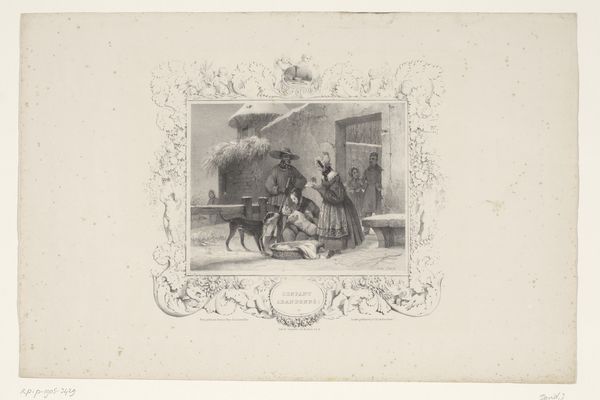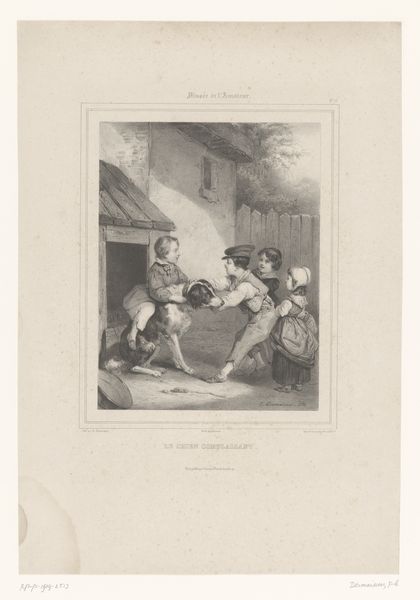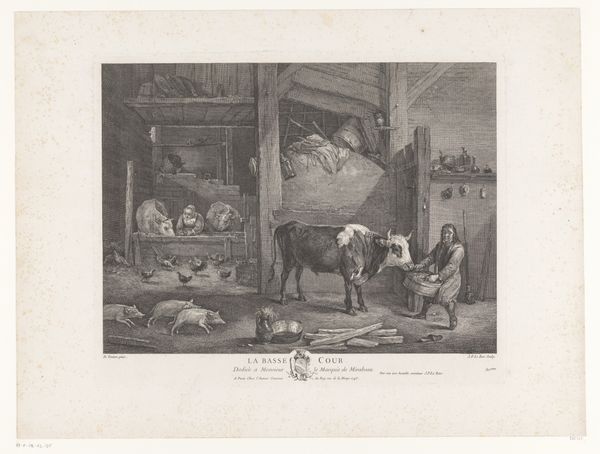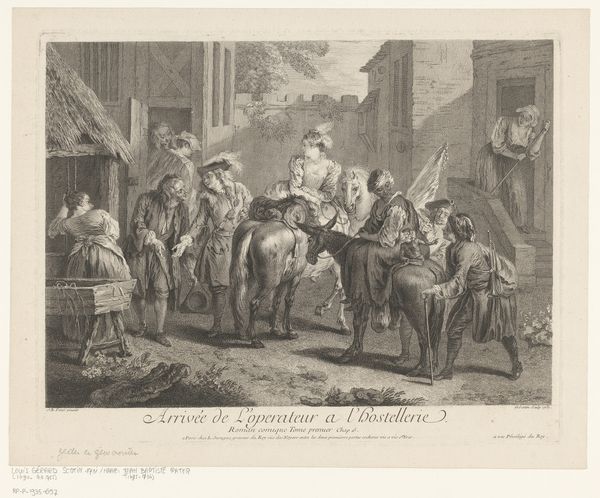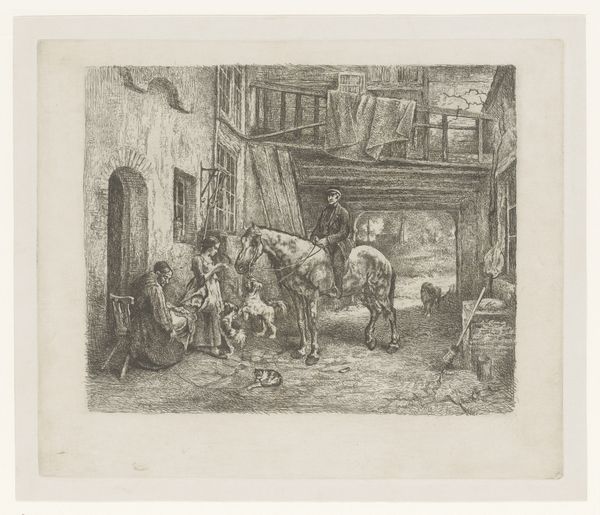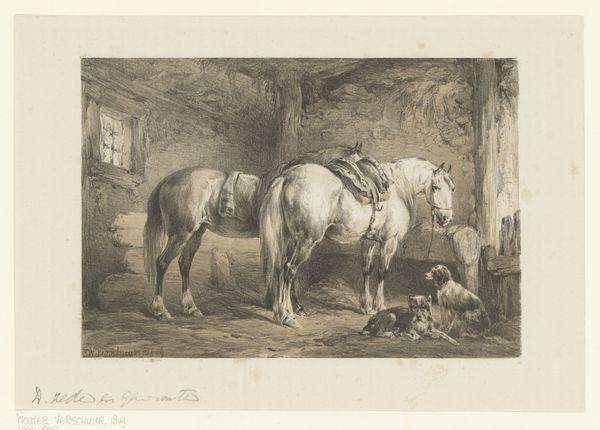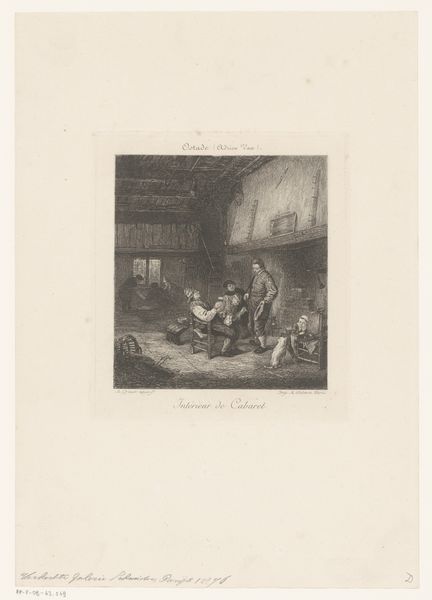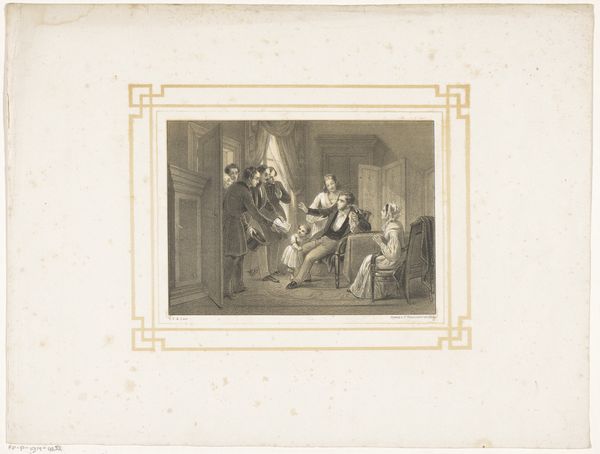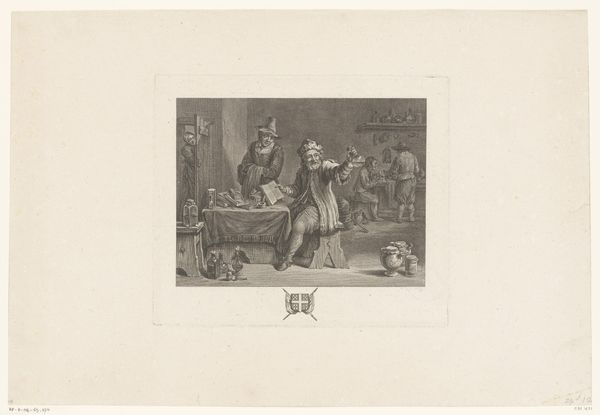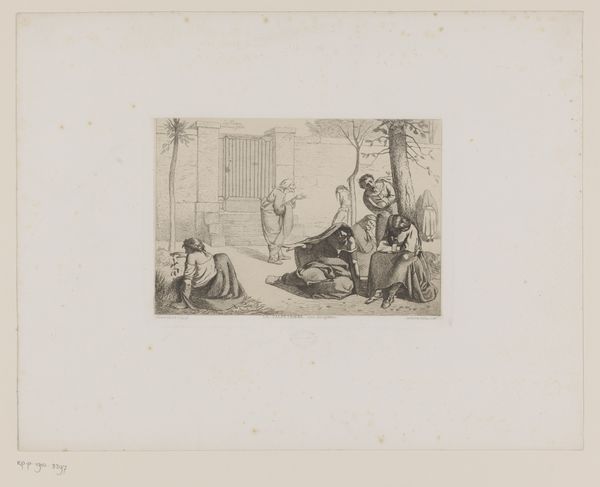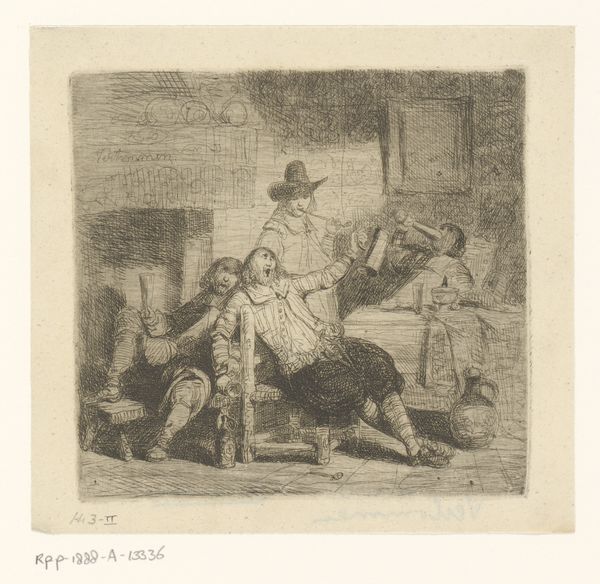
Boodschappenjongen op paard voor een huis met twee vrouwen en kind 1823 - 1829
0:00
0:00
print, engraving
#
print photography
# print
#
landscape
#
genre-painting
#
engraving
#
realism
Dimensions: height 391 mm, width 457 mm
Copyright: Rijks Museum: Open Domain
Editor: This print, titled "Boodschappenjongen op paard voor een huis met twee vrouwen en kind" – or "Errand Boy on Horse in Front of a House with Two Women and Child," created between 1823 and 1829 by Abraham Raimbach, and housed here at the Rijksmuseum – really captures a sense of everyday life. What visual cues strike you as significant? Curator: Immediately, I see a clear illustration of social hierarchy through dress and pose. The errand boy, on horseback but looking downward, versus the standing women with bonnets who seem to be receiving goods or payment. Note also the child and dog; symbols of domesticity, rootedness. These are not chance encounters, but embedded rituals. Do you notice the repeated motif of contained space? Editor: The doorway, definitely. And also, the stable or yard that frames the boy? It feels like we're observing a carefully constructed stage. Curator: Exactly. Consider the horse. A beast of burden, yes, but also a symbol of travel, of messages carried. It links these domestic spaces to the world beyond. The light and shadow play, too, seems intentional, almost moralizing. What emotional response do you get? Editor: A little somber, maybe? There’s activity, but everyone seems caught in their role. Like components in a cycle of service and exchange. Curator: And does that echo in any familiar narratives for you? Perhaps social power dynamics or expectations of labor and reward? Even today, the weight of those symbols endure, just in different costumes. Editor: That's fascinating – I hadn't considered the continuity of those power dynamics through imagery. Now I see it’s less about a simple errand, and more about a visual representation of a societal structure. Curator: Indeed. The print becomes a coded message reflecting a shared understanding within its cultural context.
Comments
No comments
Be the first to comment and join the conversation on the ultimate creative platform.

